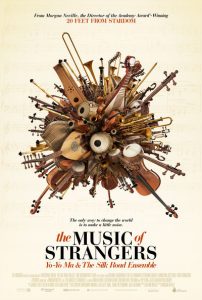Life, Animated
Posted on July 7, 2016 at 5:34 pm
B+| Lowest Recommended Age: | Middle School |
| MPAA Rating: | Rated PG for thematic elements, and language including a suggestive reference |
| Profanity: | None |
| Alcohol/ Drugs: | None |
| Violence/ Scariness: | Emotional upheavals |
| Diversity Issues: | A theme of the movie |
| Date Released to Theaters: | July 8. 2016 |

Temple Grandin described her experience of trying to understand social interaction as a person with autism: like an anthropologist on Mars. The kinds of social cues that come naturally to neurotypicals can seem strange and even disorienting to people on the autism spectrum, who may be overwhelmed with undifferentiated input that makes it even more difficult to understand the mood and motives of the people around them. “Life, Animated,” based on the best-seller by Ron Suskind, is the story of Owen Suskind’s efforts to use Disney animated films to help him understand and communicate with the people around him. Taking up where the book ends, it is the story of the most universal of human experiences — leaving home, becoming independent, negotiating romance and work — as seen through the unique mind of a man who finds his answers in Disney movies.
And of course so many Disney movies are about growing up. We see Owen watching Wendy in “Peter Pan” as she says, “I have to grow up tomorrow.” And Owen tells us he is a little nervous and a little excited about graduating and moving out of his parents’ house and into a group home.
Owen was developing normally until age three, and then suddenly he “vanished.” He stopped speaking. “It’s like we were looking for clues to a kidnapping.” His parents found themselves in those less-friendly doctor’s offices, the ones that have rooms with special windows for observation. Owen was diagnosed with “pervasive developmental disorder,” which basically means: “we have no idea what the problem is or how to fix it.”
The Suskinds, one of the most loving, wise, and devoted families ever put on film, were determined to undertake “a rescue mission to get inside this prison of autism and pull him out.”
And it turned out, from the inside of that prison, Owen was on his own rescue mission. Suddenly, at 6 1/2, after years of no clear sign that he could still speak or of how much he understood, he said to his parents after his brother’s birthday party, “Walter doesn’t want to grow up, like Mowgli and Peter Pan.”
That is not only a complex sentence; it is a complex idea. The family began to use the Disney films as a sort of English as a second language mode of communication. Owen’s father used a puppet of “Aladdin” character Iago to speak to him, and Owen answered back. “We began to speak to him in Disney dialog.” As an expert in the film notes, animated characters are exaggeratedly expressive. Their fear, anger, and affection is clearly shown, and repeat viewings are illuminating and reassuringly the same, a welcome consistency in a world of chaos and unpredictability. “Disney keeps the world neat and tidy.”
It also gives Owen a chance to interact. He starts a Disney club for other people with autism. A surprise visit from two Disney voice talents is a movie highlight, and, clearly for the actors unused to such unalloyed enthusiasm, a career highlight for them.
And Owen draws the characters, too. But only the sidekicks, never the principals, the stars. Perhaps he feels that he is a sidekick as the people around him have adventures he will not.
Director Roger Ross Williams, a family friend, is clearly trusted by the family and he more than earns it with a sensitive, understanding approach. With the permission of Disney, he includes clips and animation inspired by Disney that tells Owen’s story in a way that lets us see through his eyes the way that “Peter Pan” and “Aladdin” let him see through ours.
Parents should know that this film includes discussions of autism, growing up, and separation, a painful break-up, and a mild sexual reference.
Family discussion: What movie helped you understand feelings and communication? What is the best way for families and friends to help people like Owen?
If you like this, try: “How to Dance in Ohio” and “The Story of Luke”




